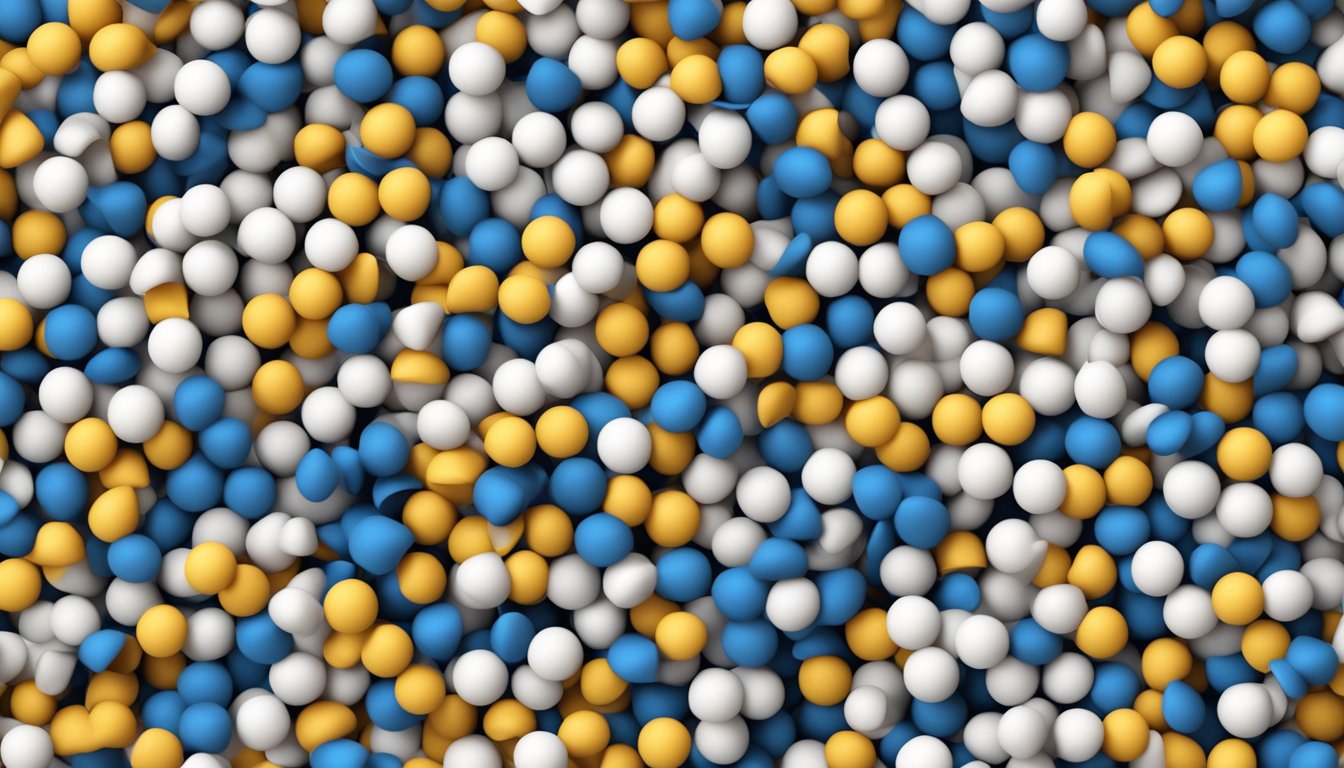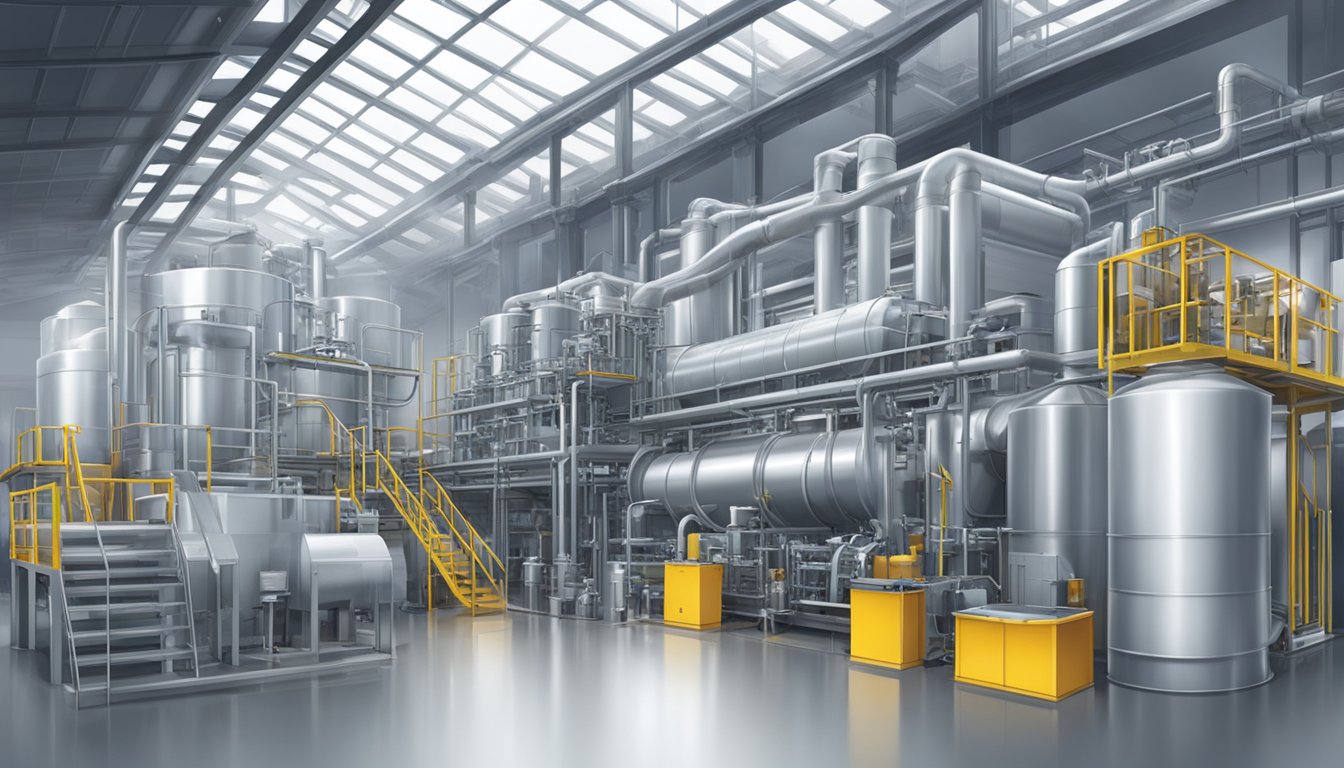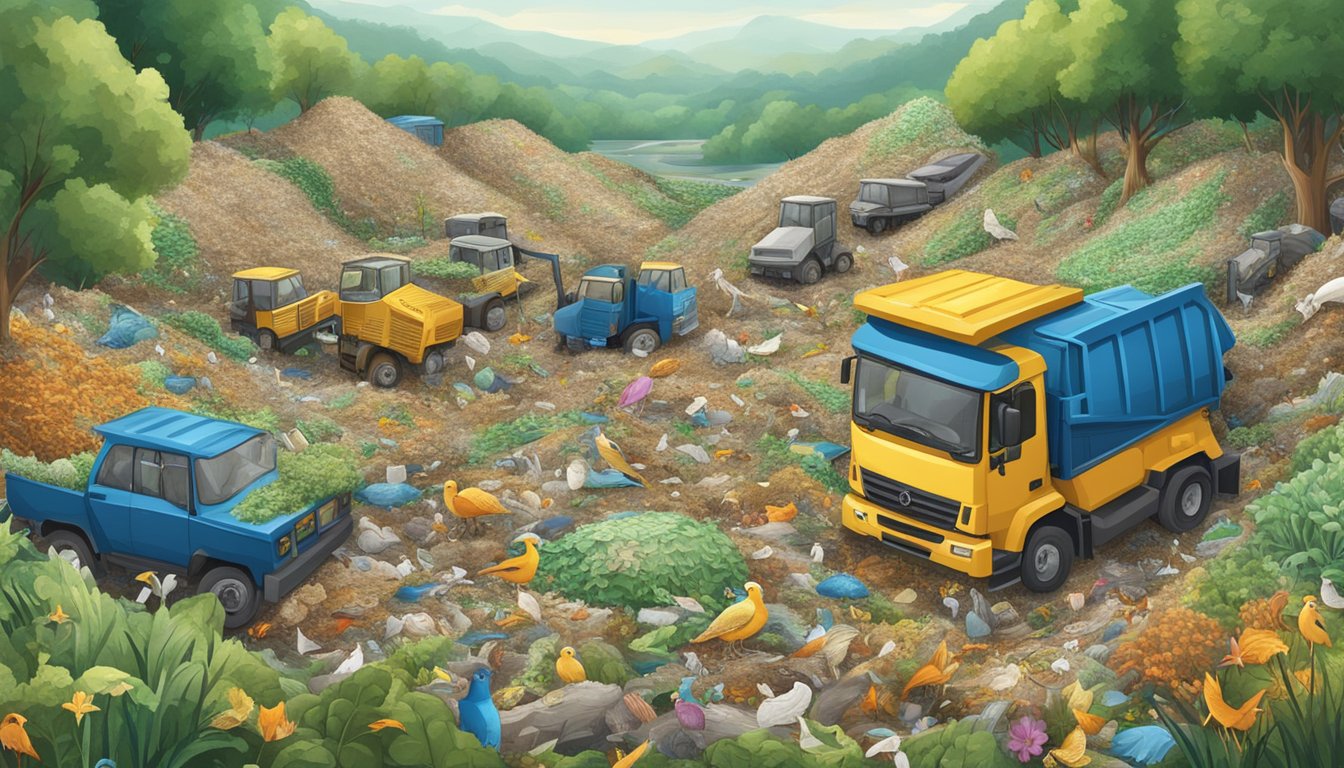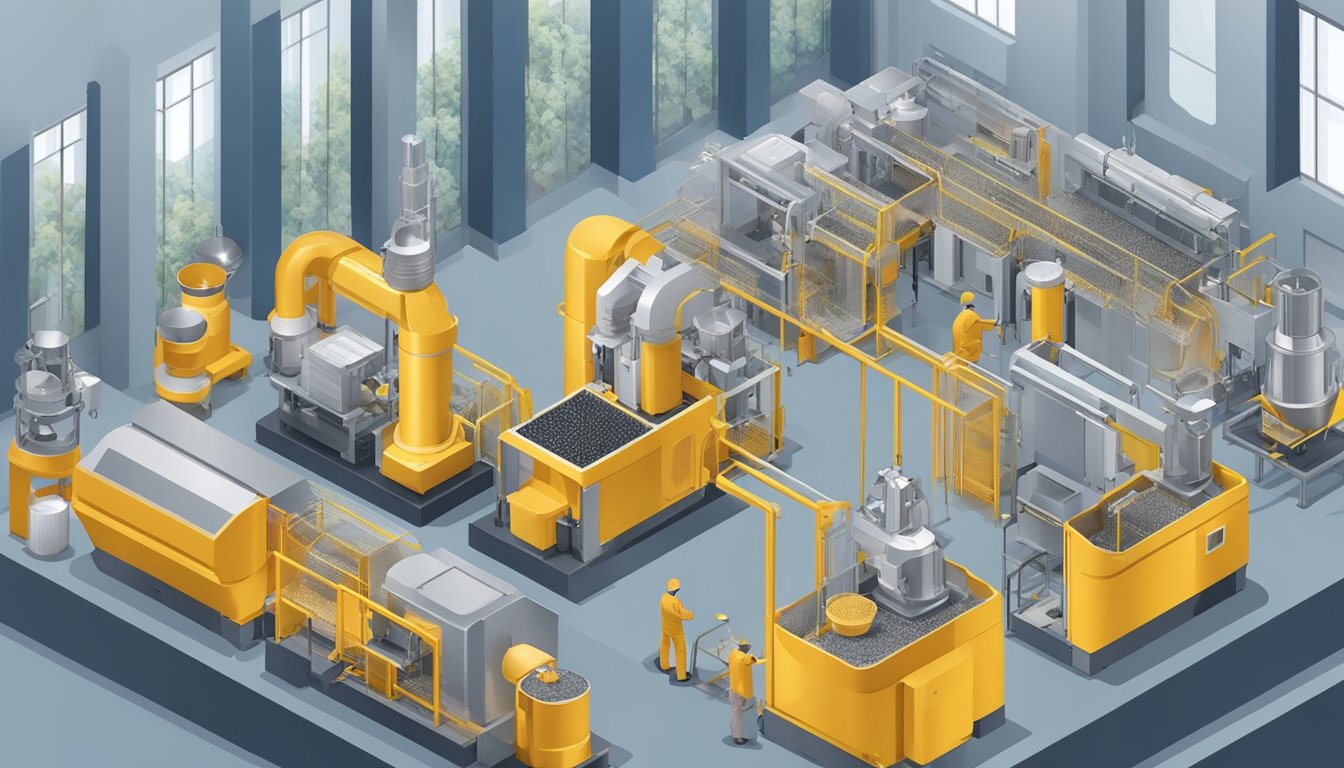Biopol Plastic: An Eco-Friendly Alternative to Traditional Plastics
19/01/2024
If you’re like most people, you’re probably concerned about the impact that Biopol Plastic waste is having on our planet. Fortunately, there are alternatives to traditional petroleum-based plastics that are more environmentally friendly. One such alternative is biopol plastic, which is made from renewable resources such as corn starch.

Biopol plastic is a type of biodegradable plastic that has many benefits over traditional plastics. Not only is it made from renewable resources, but it also breaks down much faster than traditional plastics, which can take hundreds of years to decompose. Additionally, biopol plastic is non-toxic and doesn’t release harmful chemicals into the environment as it breaks down.
Despite its many benefits, biopol plastic still faces some challenges. One of the biggest challenges is the cost of production, which is currently higher than traditional plastics. Additionally, there are still some regulatory hurdles that need to be overcome before biopol plastic can be widely adopted. However, with continued research and development, biopol plastic has the potential to play a significant role in reducing the environmental impact of plastic waste.
Key Takeaways
- Biopol plastic is a biodegradable plastic made from renewable resources such as corn starch.
- It breaks down much faster than traditional plastics and is non-toxic.
- While it still faces some challenges, biopol plastic has the potential to significantly reduce the environmental impact of plastic waste.
Biopol Plastic Overview

Definition and Composition
Biopol plastic is a type of biodegradable plastic made from natural resources such as corn starch, sugarcane, and potato starch. It is a sustainable alternative to conventional plastics, which are made from non-renewable resources such as petroleum. Biopol plastic is compostable and can be broken down by microorganisms into carbon dioxide, water, and biomass.
Historical Development
Biopol plastic was first developed in the 1990s by a German company called BASF. Since then, other companies have also started producing biopol plastic, and it has become more widely available. Biopol plastic has been used in a variety of applications, including packaging, disposable cutlery, and agricultural films.
Market Presence
Biopol plastic is still a relatively small part of the overall plastic market. However, there is growing interest in biodegradable and compostable plastics, and the market for these materials is expected to grow in the coming years. Biopol plastic is currently more expensive than conventional plastics, but as production increases and economies of scale are achieved, the price is expected to come down.
In summary, biopol plastic is a sustainable alternative to conventional plastics, made from natural resources and compostable. While still a small part of the overall plastic market, it has the potential to become more widely used in the future.
Environmental Impact

Biodegradability
One of the most significant advantages of biopol plastics is their biodegradability. Biopol plastics are made from natural materials such as cornstarch, sugarcane, and cellulose, which means they can be broken down by microorganisms into natural elements such as water, carbon dioxide, and biomass. This process is known as composting, and it can take anywhere from a few weeks to several months depending on the environmental conditions.
Life Cycle Analysis
A life cycle analysis (LCA) is a method used to evaluate the environmental impact of a product throughout its entire life cycle, from the extraction of raw materials to disposal. According to several studies, biopol plastics have a lower environmental impact than traditional plastics when it comes to greenhouse gas emissions, energy consumption, and water usage. However, it’s important to note that the production of biopol plastics still requires energy and resources, and the disposal of biopol plastics in landfills can still result in the release of methane gas.
Comparison with Traditional Plastics
Compared to traditional plastics, biopol plastics have several environmental advantages. For example, biopol plastics are made from renewable resources and are biodegradable, which means they don’t accumulate in landfills or oceans. Additionally, biopol plastics have a lower carbon footprint and require less energy to produce than traditional plastics. However, biopol plastics are not without their drawbacks. For example, they can be more expensive to produce than traditional plastics, and they may not have the same level of durability or resistance to heat and chemicals.
Overall, while biopol plastics have several environmental advantages over traditional plastics, it’s important to consider the entire life cycle of the product when evaluating its environmental impact. By choosing biopol plastics, you can help reduce your carbon footprint and contribute to a more sustainable future.
Production Process

Raw Material Sourcing
The production of biopol plastic begins with the sourcing of raw materials. These materials are typically derived from renewable resources such as corn starch, sugarcane, or potato starch. The use of renewable resources ensures that the production process is environmentally friendly and sustainable.
To ensure the quality of the raw materials, biopol plastic manufacturers source their materials from reputable suppliers who adhere to strict quality control standards. This helps to ensure that the final product is of high quality and meets the necessary specifications.
Manufacturing Techniques
The manufacturing process of biopol plastic involves several stages. First, the raw materials are processed into a liquid form. This liquid is then mixed with other ingredients to form a polymer. The polymer is then extruded into pellets, which are used to create the final product.
The manufacturing process for biopol plastic is highly automated, which ensures that the final product is consistent and of high quality. Additionally, the use of renewable resources and the efficient manufacturing process makes biopol plastic a cost-effective alternative to traditional plastics.
Quality Control
Quality control is an important aspect of the production process for biopol plastic. Manufacturers use a variety of techniques to ensure that the final product meets the necessary specifications. These techniques include testing the raw materials before they are used in the manufacturing process, monitoring the manufacturing process to ensure consistency, and testing the final product to ensure that it meets the necessary quality standards.
In addition to these quality control measures, manufacturers also have strict environmental standards that they must adhere to. This ensures that the production process is environmentally friendly and sustainable.
Overall, the production process for biopol plastic is highly efficient and sustainable. The use of renewable resources and the strict quality control measures ensure that the final product is of high quality and meets the necessary specifications.
Applications of Biopol Plastic
Packaging Industry
Biopol plastic has been widely used in the packaging industry due to its biodegradable nature. It is a sustainable alternative to traditional petroleum-based plastics, which take hundreds of years to decompose. Biopol plastic can be used to make a variety of packaging materials such as bags, containers, and films. It is also suitable for food packaging as it does not release any harmful chemicals when in contact with food.
Agricultural Use
Biopol plastic has also found its way into the agricultural sector. It can be used to make mulch films, which are placed on the soil to prevent weed growth and retain moisture. Biopol mulch films are biodegradable and can be plowed into the soil after use, reducing waste and improving soil quality. Biopol plastic can also be used to make biodegradable plant pots, reducing the need for plastic pots that end up in landfills.
Medical Applications
Biopol plastic has been used in the medical industry for a variety of applications. It can be used to make surgical sutures, drug delivery systems, and implantable medical devices. Biopol plastic is biocompatible, meaning it does not cause any harm or adverse reactions when in contact with living tissue. It is also biodegradable, reducing the need for additional surgeries to remove implants.
Overall, biopol plastic has a wide range of applications in various industries. Its biodegradable nature makes it a sustainable alternative to traditional plastics, reducing waste and improving the environment.
Regulatory Framework
International Standards
Biopol plastic is a biodegradable and compostable plastic material that is regulated by international standards. The most widely recognized standard for biodegradable plastics is the ASTM D6400 standard, which is recognized by the United States Federal Trade Commission (FTC) as well as the European Union. This standard specifies the requirements for compostable plastics, including biopol plastic, to ensure that they break down into carbon dioxide, water, inorganic compounds, and biomass in a composting environment.
In addition to the ASTM D6400 standard, there are other international standards that regulate biodegradable plastics, including the ISO 17088 standard and the EN 13432 standard. These standards also specify the requirements for compostable plastics, including biopol plastic, to ensure that they are environmentally friendly and do not harm the environment.
National Regulations
Many countries have their own regulations for biodegradable plastics, including biopol plastic. For example, the United States has the Biodegradable Products Institute (BPI) certification program, which certifies biodegradable products, including biopol plastics, as compostable. The BPI certification program ensures that biodegradable products meet the ASTM D6400 standard and other requirements for compostability.
Similarly, the European Union has the European Bioplastics Association (EUBP) certification program, which certifies bioplastics, including biopol plastics, as compostable. The EUBP certification program ensures that bioplastics meet the EN 13432 standard and other requirements for compostability.
It is important to note that regulations for biodegradable plastics, including biopol plastics, vary by country. Therefore, it is important to check the regulations in your country before using biodegradable plastics.
Challenges and Opportunities
Technical Limitations
Biopol plastic has a few technical limitations that need to be addressed before it can be widely adopted. Firstly, biopolymers have lower heat resistance compared to traditional plastics, which limits their use in high-temperature applications. Secondly, biopolymers are susceptible to moisture absorption, which can cause dimensional instability and degradation over time. Finally, the current production methods for biopolymers are not yet optimized, resulting in higher costs and lower yields.
Economic Considerations
The production of biopolymers is currently more expensive than traditional plastics due to the higher cost of raw materials and the lack of economies of scale. However, as demand for sustainable alternatives to traditional plastics increases, the cost of biopolymers is expected to decrease. Additionally, biopolymers have the potential to create new markets and opportunities for sustainable businesses.
Future Prospects
Despite the challenges, biopolymers present significant opportunities for sustainable development. Biopolymers can be made from renewable resources, reducing our dependence on fossil fuels. They are also biodegradable, which can help reduce the amount of plastic waste in our environment. Furthermore, biopolymers have the potential to be used in a wide range of applications, from packaging to medical devices.
In conclusion, biopolymers have the potential to revolutionize the plastics industry, but there are still technical and economic challenges that need to be addressed. However, as the demand for sustainable alternatives to traditional plastics increases, the future prospects for biopolymers look promising.




